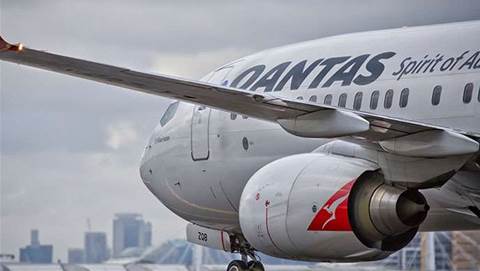The Department of Defence stood up a suite of protected-level Microsoft collaboration tools for its workforce in less than 11 weeks to support the work from home shift earlier this year.
CIO Stephen Pearson told the Technology in Government summit that the virtual environment for remote access (VERA) solution was developed to secure interactions during remote work.
“VERA is our protected-level digital collaboration capability, which uses Microsoft Office 365 applications to enable secure interaction across Defence,” he said on Tuesday.
The platform gives staff access to chat, video conferencing and other applications through Microsoft Teams, Word, Excel, PowerPoint and OneNote.
Defence’s most recent annual report reveals the project, which was brought forward from 2021 in response to Covid-19, was developed as staff began working remotely in March.
It was “developed and delivered for initial release in just eight weeks”, with availability then extended across the entire organisation within another three weeks.
VERA allows users to access, update and send protected-level documents on any device without using the Defence Remote Electronic Access Management System (DREAMS).
DREAMS allows staff to connect to the Defence Protected Network remotely, and its usage increased by almost 900 percent during Covid.
Pearson on Tuesday said the department had to shift to support “an unprecedented amount of staff working remotely, and on a global basis”.
“Our remote working operations have jumped from around 2000 to around 18,000 users per day,” he said.
“Given that growth, I'm proud of how well our systems and people have handled the volume of work, and on a sustained basis.”
Pearson added the unified communications component of the Defence terrestrial communications network (DTCN) will also improve collaboration tools on the fixed network.
As revealed by iTnews earlier this year, the DTCN - which is currently several years behind schedule - was recently evaluated as requiring urgent action to address major risks.
“More recently as part of the terrestrial communications project, we have also been working with our industry partners to bring the unified communications project online,” Pearson said.
“When complete, this will substantially enhance our fixed network collaboration tools and phone networks and ensure a common user experience between the fixed and mobile environments.
“It also better supports and helps normalise remote working. For example, it will allow users to easily divert their phones.
“Together these activities are helping us to streamline the way defence communicates both internally and externally.”
IT operating model review
Pearson also used the summit to provide an update of the chief information officer group’s review of Defence’s decade-old IT operating model.
The review, which began earlier this year, will determine whether the model has remained sufficiently agile and responsive since it was first introduced in 2009.
It is being undertaken by strategy consulting firm McKinsey under a contract that is now worth $8.8 million.
Pearson said Defence is planning to begin implementation of the new design in early 2021, although it will take several years to fully implement.
He added the review would ensure Defence’s IT model is “more responsive, reliable and resilient, and can accommodate the rapidly evolving technology needs and priorities”.
“Getting the model right will also help us inject more end-to-end innovation into our business,” he said.
“Our operating model drivers will deliver a better way of working with our Defence teams and our broad range of partners; provide a seamless, integrated One Defence experience across capabilities; [and] create a high performing organisation with the right people in the right place.
“And wherever, and in parallel to this, we are also playing the long game. All future tasks associated with entrenching stability and building a more modern, secure, efficient and effective ICT environment are being progressed programmatically through the CIOG campaign plan, ‘Plan Baroochy’.
“It is this plan that will help drive our approach to ICT, [and] along with their growing investment put us on the path to best practice.”
Pearson also revealed that Defence is developing a new cyber security plan that it will release in the first half of next year.


























